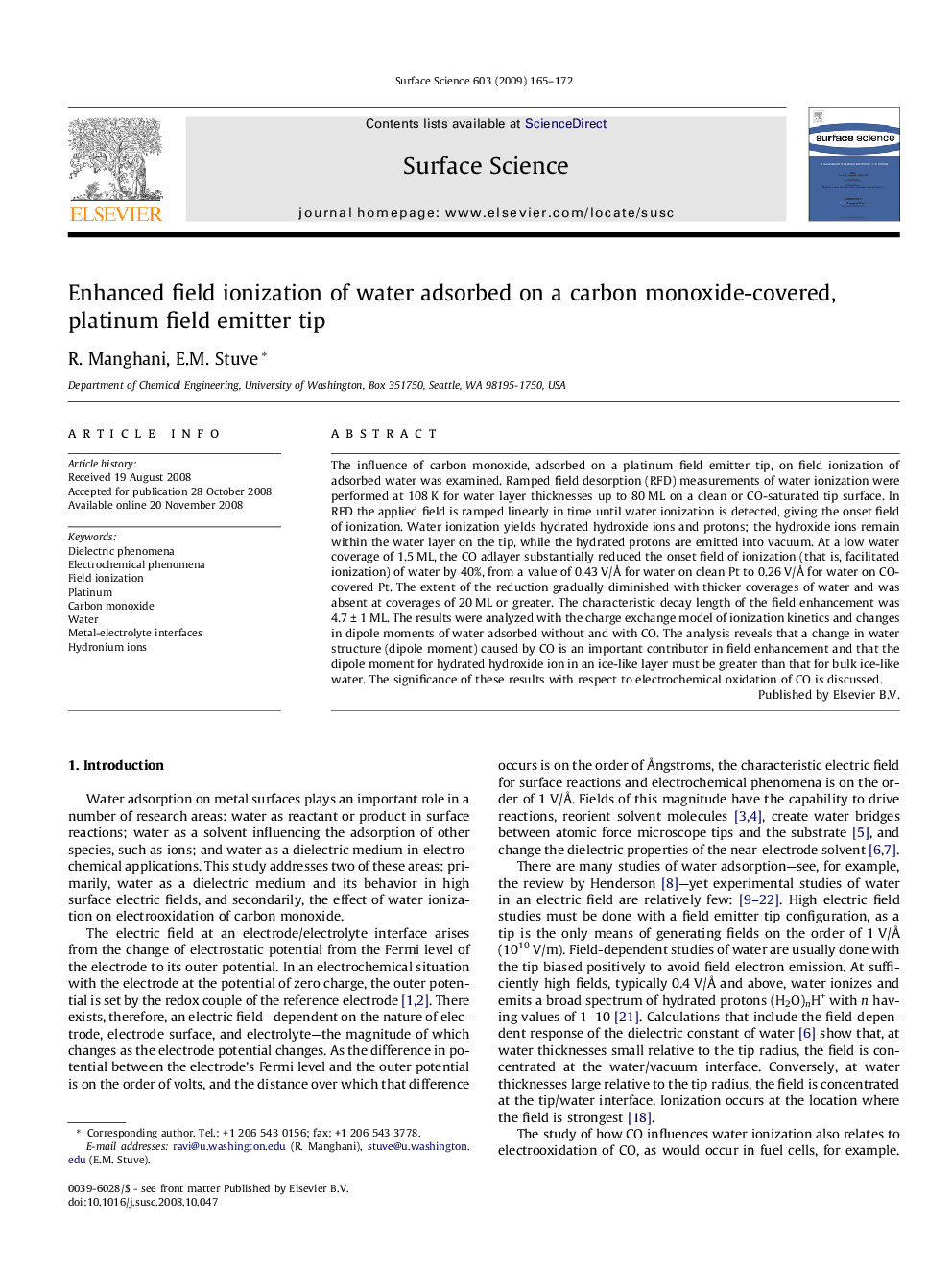| Article ID | Journal | Published Year | Pages | File Type |
|---|---|---|---|---|
| 5424772 | Surface Science | 2009 | 8 Pages |
Abstract
The influence of carbon monoxide, adsorbed on a platinum field emitter tip, on field ionization of adsorbed water was examined. Ramped field desorption (RFD) measurements of water ionization were performed at 108Â K for water layer thicknesses up to 80Â ML on a clean or CO-saturated tip surface. In RFD the applied field is ramped linearly in time until water ionization is detected, giving the onset field of ionization. Water ionization yields hydrated hydroxide ions and protons; the hydroxide ions remain within the water layer on the tip, while the hydrated protons are emitted into vacuum. At a low water coverage of 1.5Â ML, the CO adlayer substantially reduced the onset field of ionization (that is, facilitated ionization) of water by 40%, from a value of 0.43Â V/Ã
for water on clean Pt to 0.26Â V/Ã
for water on CO-covered Pt. The extent of the reduction gradually diminished with thicker coverages of water and was absent at coverages of 20 ML or greater. The characteristic decay length of the field enhancement was 4.7 ± 1 ML. The results were analyzed with the charge exchange model of ionization kinetics and changes in dipole moments of water adsorbed without and with CO. The analysis reveals that a change in water structure (dipole moment) caused by CO is an important contributor in field enhancement and that the dipole moment for hydrated hydroxide ion in an ice-like layer must be greater than that for bulk ice-like water. The significance of these results with respect to electrochemical oxidation of CO is discussed.
Keywords
Related Topics
Physical Sciences and Engineering
Chemistry
Physical and Theoretical Chemistry
Authors
R. Manghani, E.M. Stuve,
